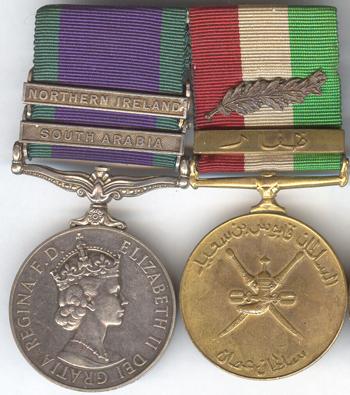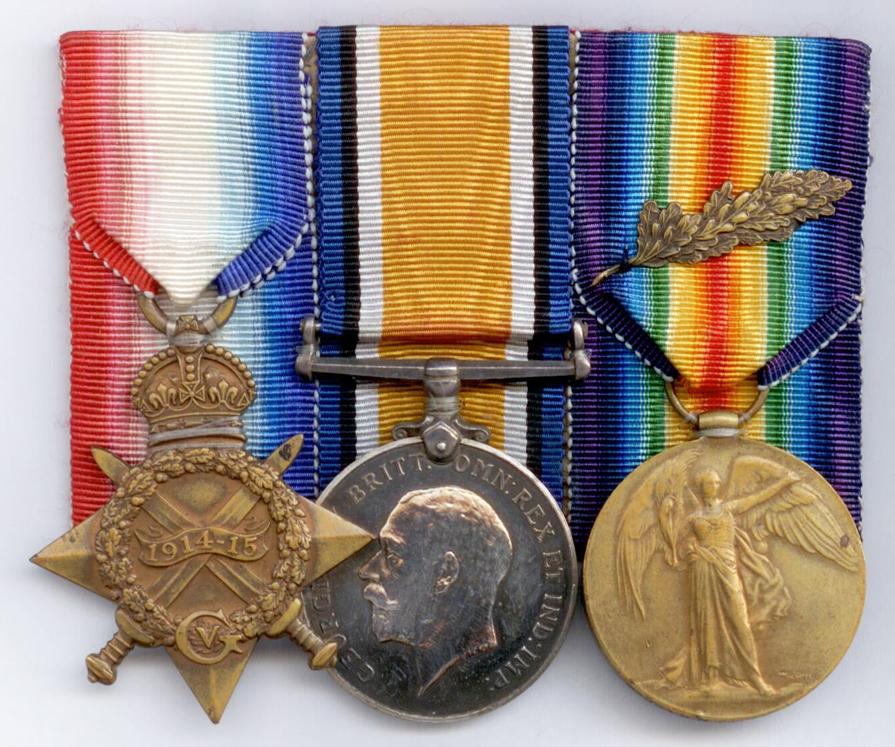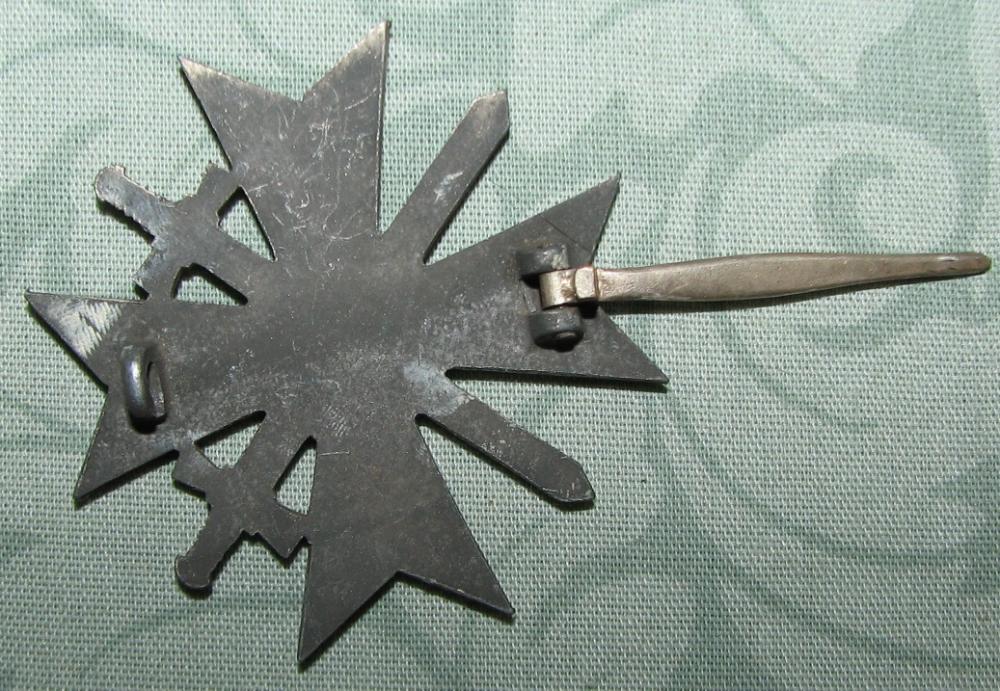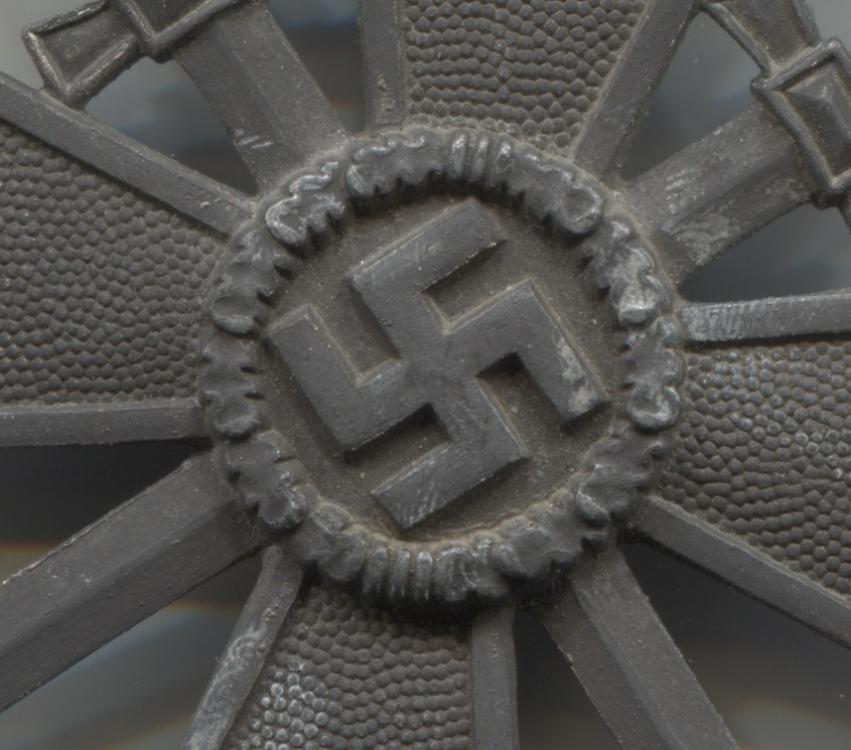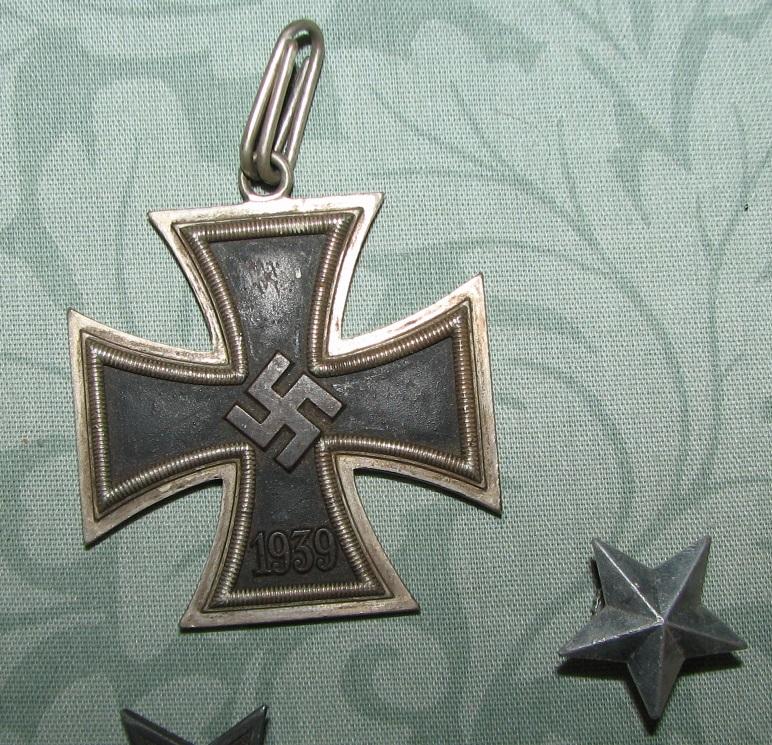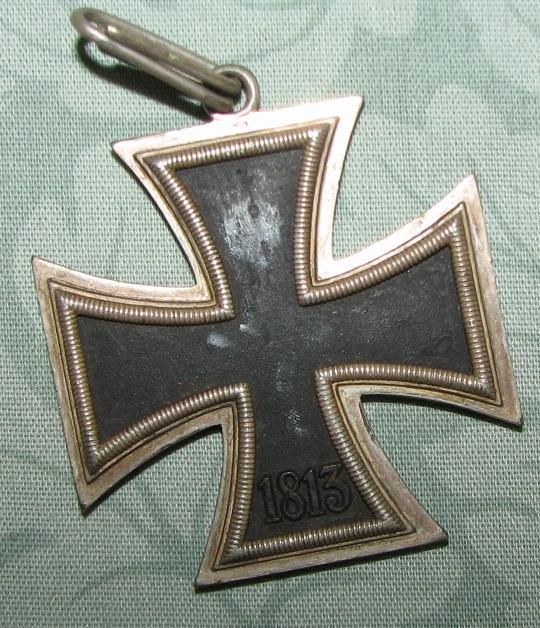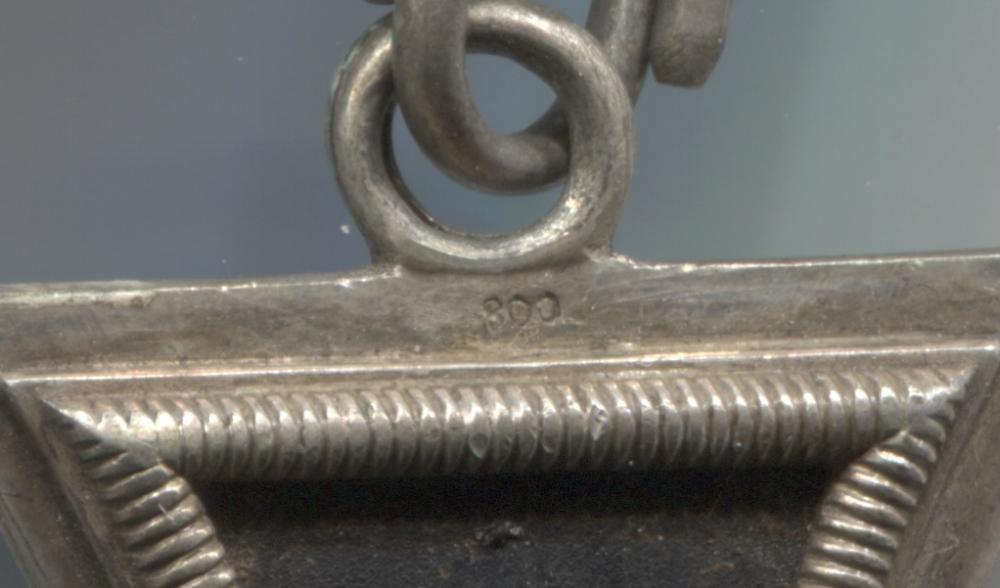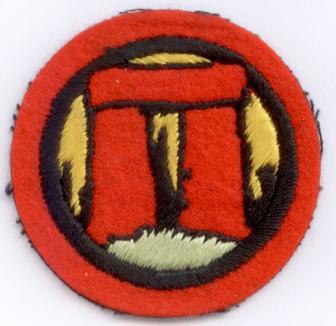-
Posts
552 -
Joined
-
Last visited
-
Days Won
2
Content Type
Profiles
Forums
Blogs
Gallery
Events
Store
Everything posted by Gunner 1
-
Does anyone have any idea what the right-hand ribbon in the second row is?
-
The ribbon bar is Polish. The top ribbon with the star is the Polish wound ribbon with star for second award. 2nd Row: OBE/MBE, Bronze Cross of Merit, Bronze Cross of Merit, Unknown 3rd Row: Army Medal for War of 1939-1945: Long Service Medal (30 years)(appears to be wrong ribbon), LSM (20 years), LSM (10 years)
-

Named, unnamed & numbered......
Gunner 1 replied to bigjarofwasps's topic in United States of America
Your questions and the problems associated with those questions are the main reasons that, even though an American, I collect British medals rather than US medals. Records that allow the attribution of a US campaign medal to a particular person are available for only a small number of the numbered campaign medals and it is relatively easy to alter a number on these medals. While many US collectors claim to be able to distinguish between officially-named medals and decorations and those privately named, I have never been able to convince myself that this is really the case. It will be interesting to see what forum members who collect US medals have to say. -
Omani General Service Medal with clasp DHOFAR and Sultan's Commendation with a British GSM and two clasps to a British Army officer.
-

Medal of Honor, awarded more than once?
Gunner 1 replied to bigjarofwasps's topic in United States of America
There were 13 recipients of two Medals of Honor (see http://www.cmohs.org/double-recipients.php) -
It has already happened to the LSGC Medal. The Army LSGC Medal (up to 1930) had no provision for the award of a bar so a man who received the medal prior to 1930 would not receive a bar to that medal but rather receive the Military LSGC Medal (post 1930). The man who received the group below was awarded the Army LSGC Medal in the Army Order of 31 October 1929 (as a WO 2, RA) and the Military LSGC Medal in the London Gazette of 23 June 1950 (as a Major (QM), RA).
-

8th Fighter group P40 KIA Purple Heart
Gunner 1 replied to scottplen's topic in United States of America
John: I wish you success in finding the Purple Heart issued to your uncle and hope you are able to return it to your family. Regards, Gunner 1 -

8th Fighter group P40 KIA Purple Heart
Gunner 1 replied to scottplen's topic in United States of America
John: I am sorry that it is necessary for you to be so angry in your comments but my guess is that it stems from ignorance rather than malice. Most of the information I have on the officers I research does not come from Google (as you suggest), but rather from service papers available at The National Archives, school and college registers and rolls of honor, unit histories, war diaries, personal diaries, personal narratives, Army Lists and other similar sources which I have spent a small fortune to assemble in my library. I also really resent your comments concerning "how many family members have you spoken with and compare (sic) knowledge with?" as I have helped thousands of family members research their relatives on the British Medal Forum, Ancestry, the Great War Forum and numerous other genealogical forums and have never charged one cent for any of the information I have provided (and I must state that in the vast majority of these discussions with family members they had very little, if any, knowledge of the war services of their relatives). I have also personally returned four different medals and medal groups to family members of the recipients including a Purple Heart to the son of my Sunday School teacher who was killed in action during the Battle of the Bulge and whose medal I purchased at an auction specifically so I could return it to his sister. I also edit two journals on medal collecting (one in the US and one in the UK) and the vast majority of the articles in each of these journals concern detailed and comprehensive research on the recipients of medals in the various authors' collections. You are certainly welcomed to your opinions, but then again so I am, and I do not appreciate being lectured by someone who has spent less than a few minutes on this Forum, who obviously has little knowledge of what medal collecting is all about and who makes accusations about me personally when he has no idea what I do, or do not do, in terms of research or interaction with relatives of medal recipients. Most of the medal collectors with whom I am acquainted do not collect for profit but rather to learn about the services of officers and men who served in the various armies of the world and to honor the service that these men (and women) performed, often at the sacrifice of their lives. Gunner 1 -

8th Fighter group P40 KIA Purple Heart
Gunner 1 replied to scottplen's topic in United States of America
John: May I ask what you find unethical about the buying and selling of war medals? The vast majority of the ones on the collector market were initially sold by family members (as you indicate was the case with your uncle's Purple Heart). If you look carefully at the medals illustrated on this Forum and other similar forums I think that you will find that the vast majority of medal collectors revere and respect the recipients of the medals they collect (if they are named or otherwise attributable) and most collectors research the recipients and often know much more about the recipients than did their family members. Gunner 1 -

Soviet All About Researching Soviet Awards
Gunner 1 replied to NavyFCO's topic in USSR: Soviet Orders, Medals & Decorations
As many of you are probably already aware there are a number of websites that are quite useful in researching recipients of Soviet awards during the Great Patriotic War if you know their name (and can read and type in Russian): 1. http://www.podvig-naroda.ru/?#tab=navHome - this site allows one to download the приказ and the наградной лист for each recipient. 2. http://www.obd-memorial.ru/html/index.html - which allows one to find the rank, unit, date of death, place of death, place of burial, and next of kin of those who died during the Great Patriotic War. -
Pretty slim pickings for medals in San Francisco. There is a militaria show in San Jose every few months but I have not seen any notice about the date.
-

Seriously? No, really...seriously?
Gunner 1 commented on Brian Wolfe's blog entry in News From the Home Office.
Over in the New World a small country is smaller than Rhode Island that is just over 1/7th the area and 1/3 the population of Wales (i.e tiny compared to Wales) -

Seriously? No, really...seriously?
Gunner 1 commented on Brian Wolfe's blog entry in News From the Home Office.
Brian wrote: "American football fields are 91.4m long". Seriously? No American (or to be more precise, US football fan) would have any idea what you are attempting to say, as US football fields are 100 yards long! I can just imagine an NFL TV announcer shouting: "The tailback ran 9.14 meters from scrimmage for a first down!" What??? -

The Royal Marines
Gunner 1 replied to leigh kitchen's topic in Great Britain: Militaria: Badges, Uniforms & Equipment
The information on Shipton resigning his RM commission and joining the Army (post 149 above) reminded me that some RM officers (RMA to be specific) did the the same thing during the Great War. In August 1916, due to the large number of RGA siege batteries being formed for service in France there was a shortage of qualified officers to command these siege batteries so the War Office requested that Royal Marine Artillery officers be transferred to the Royal Garrison Artillery for service as officers commanding siege batteries. One of these was Captain Hubert Richard, RMA who after almost 18 years of service as an officer was demoblized by the RMA on 21 August 1916 and accepted a commission as Temporary Captain in the Royal Garrison Artillery on the same day. Two months later he went to France in command of 199th Siege Battery, RGA. He was later promoted Major, RGA and mentioned in despatches. His full story and an image of his 1914-15 Star trio are below. Major Hubert Richard Twiss, Royal Marine Artillery/Royal Garrison Artillery 1914 - 1915 Star (Captain, R.M.A.) British War Medal (Major) WW1 Victory Medal with M. I. D. Emblem (Major) Twiss was born at Long Ditton, Surrey on 21 December 1880, the son of Arthur Edward Twiss, a clerk in the Secretary’s Office, General Post Office, London and Agnes Forbes Twiss (née Willis). He was educated at Felsted School from September 1895 to July 1898 where he was a Prefect and played on the Football XI in 1897. On 1 September 1898 he was commissioned as a 2nd Lieutenant in the Royal Marine Artillery. He was on leave from 1 September 1898 to 29 September 1898 and then was a student at the Royal Naval College from 30 September 1898 until 15 August 1900, being promoted to Lieutenant on 1 July 1899. From 16 August 1900 to 20 January1902 he served at the Headquarters, Royal Marine Artillery. He served in the Channel on H. M. S. “Magnificent” from 21 January 1902 until 21 January 1903 and then returned to service with the Royal Marine Artillery Division until 10 April 1903. From 11 April 1903 to 12 February 1904 he served on H. M. S. “Repulse” and then with the Royal Marine Artillery Division until being posted to H. M. S. “Revenge” in home waters from 18 May 1904 to 31 August 1905. Up until this point Twiss had received very good reports that stated: “a promising young officer of good physique”; “Very good tact with men. Recommended for advancement;” and “able and zealous, good tempered and tactful.” Twiss served with the Royal Marine Artillery Division from 1 September 1905 to 18 April 1906 and then served on H. M. S. “Caesar” from 19 May 1906 until 25 May 1907. From 26 May 1907 to 15 July 1907 he was posted to the Royal Marine Artillery Division and then served on H. M. S. “Good Hope” from 16 July 1907 to 17 August 1909. He was promoted to Captain, Royal Marine Artillery on 10 December 1909 and served with the Royal Marine Artillery Division from 18 August 1909 to 26 September 1910. During this period his reports began to hint at some problems with his financial obligations: “capable and has good judgment, but is not entirely reliable for the command of a detachment afloat owing to his lack of self control and of his sense of pecuniary obligations;” “good ability and judgment but lacks zeal and is careless with his pecuniary obligations;” “capable officer but careless in money matters.” These financial problems eventually caught up with him and he was tried by General Court Martial in the Officers’ Library at Eastney Barracks, Portsmouth on 18 July 1910 on two charges of “acting to the prejudice of good order and military discipline”. He was found guilty of the second charge and sentenced to be severely reprimanded. On 27 September 1910 he was posted to H. M. S. “Agamemnon” where he served until retiring at his own request with a gratuity of £1200 on 1 April 1911 and being appointed to the Reserve of Officers, Royal Marines on the same day. From 1911 to 1914 he was a planter in Ceylon. He was recalled to active service on 10 August 1914 and served in the Orkneys commanding the batteries at Hoxa and Stanger at Scapa Flow. Through his efforts “the batteries were brought to a state of efficiency, whilst they kept their personnel, consisting of mostly old men in a fit and efficient condition throughout the trying winter of 1914-1915. The men were for a long time in tents. On boggy ground without even bottom boards, for the winter was well advanced before the huts were built; this was a high test of the stamina, discipline and courage of the Royal Marine Reservist, which triumphed over all difficulties and even over his rheumatism.” From 23 December 1914 until 7 June 1915 he served on H. M. S. “Cyclops” at Scapa Flow. He was tried by naval court martial on board H.M.S. “Royal Arthur” on 7 June 1915, charged with being drunk on board “Royal Arthur.” He was found guilty and sentenced to be dismissed from “Royal Arthur” and to be severely reprimanded. From 8 June 1915 to 16 October 1915 he was posted to a 4-inch Royal Marine Artillery Battery in France. In late October 1915 a battery of 4-inch guns on field carriages was formed at Eastney, with Major Harding in command and with Captain Twiss as Battery Captain. They left headquarters for Plymouth on 15 October 1915 and embarked from there for Salonika. On arrival at Malta the battery was diverted with its guns to Alexandria, which was being used as a base for the forthcoming Salonika expedition. They arrived in Alexandria on 30 October 1915 and were added to the coastal defenses there. Battery headquarters and two of the guns were established at Sil Silleh and the other two guns were sent to Mustapha under Captain Twiss. Meanwhile the Senassi were causing trouble on the northwest frontier of Egypt, supported by Turkish submarines. When they captured Sollun in November 1915, Captain Twiss with 20 N.C.O.s and men and the two 4-inch guns from Mustapha were landed at Mersa Matruk on 26 December 1915. The sand proved so soft that the guns sank in it up to their axles and so for the time being there was nothing that could be done until a general advance was possible. On 29 November 1915 he was admitted to the 15th General Hospital at Alexandria with fever, but rejoined his unit on 13 December 1915. In January and February 1916 there were various small engagements, and at the end of February a general advance was possible, but due to the ground conditions the guns remained in position. In the early part of March Sollum was recaptured and Twiss was transferred to the Coast Defence, Sollum on 18 March 1916. He embarked at Alexandria on 8 May 1916 and returned to England via Marseilles on 20 May 1916. He served with the Royal Marine Artillery Division from 21 May 1916 to 21 August 1916. On 24 May 1916 he was admitted to the Royal Naval Hospital at Haslar with an oriental sore on the calf of his left leg. He was re-surveyed on 11 August 1916 and found fit for active service. In consequence of a request from the War Office to the Royal Marine Office for officers for Siege Artillery he was demobilized from the Royal Marine Artillery on 20 August 1916 and appointed as a Temporary Captain in the Royal Garrison Artillery on the same day. He went to France on 15 November 1916 and was appointed as an Acting Major while commanding 199th Siege Battery, Royal Garrison Artillery from 21 November 1916 to 15 July 1917. At Achiecourt, near Arras, on 8 April 1917 he was “struck on the back by falling debris and while resting, was later in the same day, thrown over by another shell striking the room he was in.” In his own words: “as however, I was only badly shaken and bruised and at that time not sufficiently bad in my opinion to leave the line, I carried on.” In July 1917 near Boesinghe “he was blown up by a shell” and spent a fortnight in the hospital, rejoining his battery at Passchendaele. On 15 August 1917 he was appointed an Acting Major while commanding a Siege Battery. “Subsequently he complained of lumbar pain and sciatica on the right side which rendered him incapable of performing his duties and he was admitted to hospital on 30 March 1918.” On 27 April 1918 he was evacuated from Boulogne to Dover on a Hospital Ship and admitted to a hospital in London where he remained for seven months. He was mentioned in the 15 September 1917 despatches of Field Marshal Sir Douglas Haig, Commanding-in-Chief, the British Armies in France “for gallant service and devotion to duty” (in the London Gazette of 11 December 1917) and was appointed as a Temporary Major, Royal Garrison Artillery on 15 September 1918. In November 1918 he was posted to the 4th Siege Artillery Reserve Brigade at Ramillies Barracks, Aldershot, but in in December 1918 he was sent back to the hospital. He left the hospital on 6 March 1919 and returned to the 4th Siege Artillery Reserve Brigade on 30 April 1919. On 20 July 1919 he was “ informed that his services were of no further use and ordered to report back to the Admiralty. He relinquished his temporary commission in the Royal Garrison Artillery on 22 July 1919 and retained the rank of Major in the army. The Admiralty denied responsibility for him, because they had demobilized him in 1916. Their Lordships in 1920 approved Twiss being allowed to volunteer for the Royal Irish Constabulary. In 1921 he engaged in a tour through Scotland delivering lectures “illustrated by a unique and beautiful series of colour and motion pictures, on the campaigns in Arabia and Palestine.” On 17 April 1924 Twiss left Southampton, England on the SS Minnesota bound for Quebec, Canada to take up farming. He died at The Vicarage, Bicester, Oxfordshire on 9 June 1945, leaving £49 5s 11d to his sister, Adelaide Ouchterlony Cowland-Cooper, wife of Charles Paul Cowland-Cooper. At the time of his death he lived at 1 Windsor Drive, Audenshaw, near Manchester. Sources: Army ListsLondon GazetteMedal Index CardRoyal Marine Papers (ADM196/63RGA Officer’s Papers (WO339/68833)Globe and Laurel, September 1916Globe and Laurel, June 1921Globe and Laurel, November 1945Britain’s Sea Soldiers: History of Royal Marine Artillery, 1930Royal Marines in the War of 1914-1919Alumni Felstediensis 1852-1921.Alumni Felstediensis 1890-1950 -

Is this Iron Cross genuine?
Gunner 1 replied to Gunner 1's topic in Germany: All Eras: The Iron Cross
Chris: Unfortunately I do not have the medal only the images from a relative. I will see what I can get from them. Regards, Gunner 1 -

British Victory Medals
Gunner 1 replied to Kev in Deva's topic in Inter-Allied Victory Medals of the Great War
JerryB: You might want to compare your medal with the images I posted on page 3 of this topic which show the distinctions between a Type I and Type II VM. Gunner 1 -

Is this Iron Cross genuine?
Gunner 1 replied to Gunner 1's topic in Germany: All Eras: The Iron Cross
Jock Auld and CR Beery: Thank you for the information. I will check the "The Great RK Debate". -

British Victory Medals
Gunner 1 replied to Kev in Deva's topic in Inter-Allied Victory Medals of the Great War
JerryB: Impossible to tell if it is a Type I or Type II based on the photos you posted. Look closely at the barrel suspension; is it part of the planchet (Type II) or is it soldered to the planchet (Type I). Also check the suspension ring; is it open or soldered by silver solder (Type I) or is it very neatly attached and the same color as the remainder of the ring (Type II)? -

Is this Nazi War Merit Cross genuine?
Gunner 1 replied to Gunner 1's topic in Wehrmacht Medals, Decorations & Awards
Robin: Thank you for that I will email the relative and see if it has a number. Regards, Gunner 1 -

Is this Nazi War Merit Cross genuine?
Gunner 1 replied to Gunner 1's topic in Wehrmacht Medals, Decorations & Awards
John: Thank you very much for the reply - I will pass on the information. Regards, Gunner 1 -
A relative has sent me the attached photos of a 1939 Iron Cross and wants to know whether it is genuine and what it is worth. I know nothing about Nazi awards and would appreciate some assistance.
-

Can you ID this British patch?
Gunner 1 replied to Gunner 1's topic in Great Britain: Militaria: Badges, Uniforms & Equipment
Dante: Thanks. That makes some sense as the other patch that came with it (see below) is identified as the Wiltshire and Dorset District (1944 and after) (Salisbury Plain District previous to 1944). Regards, Gunner 1 -
Below is an article about a Royal Artillery Lieut. Colonel who was dismissed in 1914, served as a Pte. in the Devon Regiment, and was reinstated near the end of the war. I originally published this article in the Journal of the Royal Artillery in 2002 and it was later reprinted in the journal of the Devon Regiment. Regards, Gunner 1 An Officer Who “Made Good” Lieutenant Colonel Edward Parker England, DCM, RA (Ret.) Could a cashiered 52 year-old Lieutenant Colonel of the Royal Artillery win a Distinguished Conduct Medal as a Private in a line infantry regiment? Unlikely as it seems, it did happen during the Great War. Born on 10 August 1866, Edward P. England was accepted as a Gentleman Cadet at the Royal Military Academy, Woolwich on 19 August 1884. He passed out of the ‘Shop’ on 17 February 1886 and was commissioned as a Lieutenant in the Royal Artillery. He subsequently served as a subaltern in the Royal Garrison Artillery, and the Indian Mountain Artillery in the United Kingdom and India. In 1897 he transferred to the Royal Field Artillery, serving at home and abroad as a battery captain and battery commander. He was promoted to Lieutenant Colonel on 19 May 1913. On the outbreak of war in August of 1914 England was appointed Officer Commanding the 5th Divisional Ammunition Column, Royal Field Artillery and took his unit to France on 21 August 1914. During the retreat from Mons, the 5th DAC retired as part of the 5th Division. On the evening of the 25th of August 1914, they were bivouacked along the old Roman Road to the north of Reumont. At approximately 3 a.m. on the morning of the 26th, Lieut.-Colonel England was ordered to proceed with his column to Premont, which he did, bringing the column to a location west of Premont. At about 2:30 p.m. he received orders to retire to St. Quentin, which was accomplished by alternately trotting and walking his transport wagon teams via Joncourt and Levergies. The horse teams were badly tired on a steep hill near Levergies. In addition, there were rumours of possible attack by German cavalry. Lieut.-Colonel England ordered four to six boxes of ammunition to be thrown out from each wagon to lighten loads. Later, at about 7.30 p.m., he ordered most of the surplus hay, corn, baggage and other impedimenta to be thrown out of the wagons. But, significantly, he did not ensure that his order was properly carried out. As it passed down the column, England’s order became increasingly distorted, and many of the drivers threw off all of their ammunition loads. Shortly afterward, General Sir H. Smith-Dorrien, commanding 2nd Army Corps came along the Estrees-Levergies-St. Quentin road, where he found neat piles of white boxes along both sides of the road for nearly three miles. He at first he mistook them for rations and other supplies and only realized as he was entering St. Quentin that it was gun ammunition.1 General Smith-Dorrien was greatly upset, and referred the incident to the Field Marshal Commanding in Chief, remarking that: “the case is really much more serious than appears here. It was an absolute case of panic on the part of Lieut.-Colonel England ending in his abandoning everything for which his unit exists so that he might save himself and his men.”1 General H. Smith-Dorrien went on to write that: “At St. Quentin Railway Station at about 10 p.m. on the 26th August, I was at once approached by Lieut.-Colonel England who was in an extremely nervous and agitated state.”1 A Court of Inquiry for Lieut. Colonel England was held at Pontoise, France on 29th August 1914 Based on the evidence presented, it was recommended that he be tried by General Court-Martial on two charges: First Charge - Section 4 (7) of the Army Act: “Misbehaving before the enemy in such manner as to show cowardice, in that he between Premont and St. Quentin on the 26th August 1914, by reason of fear caused by rumours of the approach of the enemy, without due cause allowed ammunition to be thrown from the wagons of the 5th Divisional Ammunition Column, of which he was in command.” Second (Alternative) Charge - Section 4 (6) of the Army Act: Knowingly doing when on active service an act calculated to imperil the success of His Majesty’s Forces, in that he between Premont and St. Quentin on the 26th August 1914, without due cause ordered ammunition to be thrown from the wagons of the 5th Divisional Ammunition Column of which he was in charge.”2 On 5 September 1914 England was admitted to hospital, “. . . it being reported that his actions were not those of a responsible person. The Deputy Director of Medical Services on examination found Lieut.-Colonel England to be suffering from considerable mental strain due to over-fatigue and want of sleep, and it was stated that he had in fact lost for the time his mental balance. He was placed on the sick list and was sent to the base.”1 Lieutenant-Colonel England was sent home and his case was submitted to the King “. . . with the result that His Majesty was pleased to direct that the officer in question be removed from the Army. Before effect was given to the decision, however, Lieut.-Colonel England appealed to the King’s Clemency mainly on the ground that owing to the effects of a severe concussion of the brain caused by a fall when riding in a point-to-point race in India in March 1913, he had since that time been incapable of any severe mental effort, which fact he had not disclosed to the medical officer who certified as to his fitness for active service; and he asked that he might be brought before a medical board with a view to being invalided out of the service, thus avoiding the severe penalty and disgrace entailed by removal from the Army.”1 "The Army Council, in view of the medical opinion already referred to, considered it probable enough that Lieut.-Colonel England’s mental equilibrium had been impaired by the strain he had undergone, but nevertheless they took the view that it was inadvisable on their part to attempt to enter into the question of mental disability in the case of an officer exercising his command in the presence of the enemy; and His Majesty was pleased not to disturb the decision already arrived at that Lieut.-Colonel England was to be removed from the Army.”1 The London Gazette of 11 December 1914 carried the following notice: “Lt.-Col. E. P. England is removed from the Army, The King having no further occasion for his services, 12 December 1914.” He was granted retired pay of £292.10s.0d annually from that date as ‘Mr. England.’ 3 Early in 1915 the now Mr. E.P. England travelled to South America to regain his health, hoping that he might be fit for further service.4 On his return to England, he initially enlisted in the Yeomanry, under an assumed name, but was invalided out due to ill-health. He then enlisted in the Mechanical Transport section of the Army Service Corps as a Private, since he was over the age limit for service in a front-line unit.1 In a later letter to the Secretary of the War Office, England explained what happened next. “As I knew several of the English general officers employed in the German East Africa Campaign, I felt sure of being transferred or attached for duty to a fighting unit of the mounted branches in that country. Hence in January 1916 I was sent to German East Africa with a Motor Ambulance Company as Sergeant, but owing to the kind offices of General Malleson, was attached for duty directly after arrival at Mombassa, to the 4th South African Horse, with whom I served as scout, range taker and occasionally machine gunner, till their disbandment at Moroforo on account of sickness amongst the men and the impossibility of mounting the men since the mounts died before arrival.”4 He returned to England in January 1917 and entered hospital for treatment of ill-health as a result of his service in East Africa. On his discharge from hospital he was transferred from the Army Service Corps to the 8th (Service) Battalion of the Devonshire Regiment as Private No 33797.1 England wrote: “I found the greatest difficulty in getting a transfer to infantry. . . and was refused a transfer to the Record Office, Woolwich and it was only in France that I managed to do so, through the kind assistance of Officer Commanding, Army Service Corps, Rouen - after 10 days training at Rouen in an Infantry Base Depot, I was transformed into a fully trained infantry man and joined the 8th Devons on their way to the trenches at Bullecourt.” 4 He joined his Battalion on 23 July 1917 “. . . and very soon thereafter attracted attention by his exceptional ability and zeal in the performance of duty, whether in the trenches or out of them. He was out with every wiring party and did most useful work on night patrols in locating occupied shell holes and enemy machine gun posts.”1 Private England was appointed second in command of a bombing section. On the morning of 4 October 1917 he was detailed for transport work away from the line. But, on hearing that an offensive operation was about to begin, he asked if he could join in the attack. His request was granted. For his actions that day he was recommended for the award of the Distinguished Conduct Medal. The recommendation read: “For conspicuous gallantry and devotion to duty during active operations on 4th October 1917, East of Polygon Wood, near Noordendhoek. During the advance an unexpected enemy machine gun opened fire from a pill box on Private England’s platoon from a range of 50 yards. The platoon officer and all N.C. Officers were hit and the men somewhat disorganized. Realizing the situation Private England freely exposing himself rallied the remainder of the platoon and taking charge of them rushed and captured the pillbox and machine gun, although badly wounded himself, on the way. Private England’s quick decision and gallant action enabled the troops on either flank to advance, who would otherwise have been held up by enfilading fire. By his quick grasp of the situation and determined action Private England showed in addition to great personal gallantry great power of leadership and command over men.”1 Private England’s Divisional, Corps and Army Commanders all recommended his reinstatement as an officer. These recommendations were supported by the Field Marshal Commanding in Chief who wrote: “. . . while recognizing the seriousness of the offence of the year 1914, is of the opinion that Private England by his devotion to duty, his soldier-like bearing, and his gallantry, merits condonation of the past; and accordingly strongly recommends reinstatement as a Lieutenant-Colonel in His Majesty’s Army.”1 In January, 1918 The London Gazette contained the following notice: 33797 Pte. E. P. England, Devonport ‘For conspicuous gallantry and devotion to duty in an attack. An enemy machine gun opened fire on his platoon at close range and caused several casualties, including his officer and all the NCO’s. He at once took command, rallied the remaining men, and though badly wounded himself, rushed and captured the “pill box” and the machine gun. His prompt and courageous action and splendid leadership enabled the advance to continue.’ ”8 In the meantime, Private England had been admitted to The Cedars Convalescent Home, Sherwood, Nottingham in January, 1918 as a convalescent. On 19 January 1918 a Medical Board found that Private England was fifty percent disabled as a result of wounds suffered in action. In consequence of that finding, the Minister of Pensions awarded him a pension of 13s.9d per week.4 Upon careful consideration of his case the Army Council recommended to the King that Private E. P. England be reinstated in his former rank of Lieutenant-Colonel.1 He was discharged from the army on 22 January 1918 to accept reinstatement as an officer. The London Gazette of 23 January 1918, on page 1156, carried the following announcement: “The KING has been graciously pleased to approve of the re-instatement of Edward Parker England in the rank of Lt.-Col., with his previous seniority, in consequence of his devotion to duty and gallantry in the field while in the ranks of the Devonshire Regiment. He is accordingly re-appointed Lt.-Col. in the Royal Horse and Royal Field Artillery 30th Dec. 1917, with seniority and to count service in that rank towards retirement on retired pay as from 19th May 1913, but without pay or allowances for the period 12th Dec. 1914 up to 29th Dec. 1917, inclusive.” After his reinstatement as an officer, the War Office informed him that because he was now an officer he could no longer draw an other-ranks pension for being wounded in action. The War Office further informed him that at the same time he couldn’t draw an officer’s wound gratuity because he was not an officer when he was wounded.4, 5 The now Lieutenant-Colonel England went before a medical board that declared him medically unfit due to wounds. Then, on 28 March 1919 he was informed by the War Office that they had approved his retirement on retired pay on account of ill-health caused by wounds with effect from 1 March 1919.6 On 9 April 1919 he was made eligible for the Silver War Badge.7 Lieutenant-Colonel Edward Parker England, R.F.A. (Retd) died at New Barn, Horwood, Bishop Tawton, North Devon on 10 January 1921 as a consequence of gunshot wounds to the lungs during the Great War. The 17 January 1921 edition of The Times carried the following obituary: An Officer Who ‘Made Good’ Death of Colonel England, D.C.M. The death occurred last week at New Barn, Horwood, North Devon, as the result of wounds received in action, of Colonel Edward Parker England, D.C.M., late Royal Artillery. In the early days of the war Colonel England was dismissed the service and subsequently enlisted, and in consequence of his gallantry while serving in the ranks was reinstated. End Notes: 1. Undated Army Council Memorandum (WO 374/22818). 2. Confidential letter from the War Office to Lieut. Colonel England dated 5 November 1914 (WO 374/22818). 3. War Office Minute Sheet dated 4 July 1918 (WO 374/22818) 4. Letter from Lieut. Colonel England to Secretary, War Office, 16 January 1918 (WO 374/22818) 5. War Office Minute Sheet dated 4 July 1918 (WO 374/22818) 6. Letter from War Office to Lieut. Colonel England of 28 March 1919 (WO 374/22818) 7. Medal Index Card for Lieut. Colonel E. P. England (WO372) 8. The Times, 17 January 1921, page 7d. © 2002 Richard A. Flory


